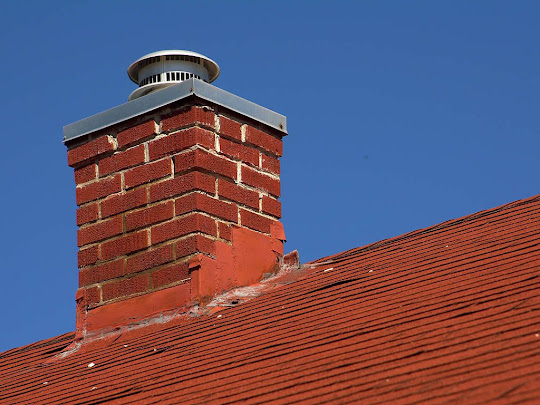Which are the causes of chimney deterioration?
- Get link
- X
- Other Apps
Throughout history, chimneys have served as integral features of residential and commercial structures, ensuring the safe removal of combustion gases and facilitating proper ventilation for heating systems. However, despite their indispensable role, chimneys are susceptible to deterioration over time, leading to compromised functionality and safety concerns. It becomes crucial for homeowners and property managers to grasp the underlying causes of chimney deterioration, empowering them to adopt proactive approaches to minimizing potential risks. This blog delves into the prevalent factors that contribute to the deterioration of chimneys and emphasizes the significance of timely inspections and repairs to uphold the longevity and efficiency of these essential architectural components.
- Improper Ventilation
Improper ventilation within the chimney system is a significant factor contributing to chimney deterioration. When there is inadequate airflow and ventilation, condensation and moisture can accumulate within the chimney. This excess moisture becomes trapped and can lead to a range of problems that accelerate deterioration.
Solution
To prevent chimney deterioration caused by improper ventilation, it is crucial to ensure that the chimney system is properly designed and installed.
- Chimney settlement
It refers to the gradual sinking or shifting of a chimney due to inadequate construction or improper support. This settling can result from a variety of factors, such as unstable soil, improper footing, or insufficient structural reinforcement. Over time, chimney settlement can lead to significant structural issues, including cracks in the masonry, leaning or tilting of the chimney, and compromised stability and integrity.
Solution
Addressing chimney settlement requires professional intervention. A qualified chimney contractor or engineer should be consulted to assess the extent of the settlement and determine the appropriate remedial measures.
- Improper Construction Material
One of the primary concerns with improper construction materials is their inability to withstand the high temperatures generated by the fireplace or stove. Inadequate bricks may not have the necessary fire resistance, leading to cracks, crumbling, and compromised structural integrity. Similarly, low-quality mortar may not bond properly with the bricks, allowing moisture to seep into the chimney system and exacerbating deterioration.
Solution
Investing in professional chimney construction or repairs using quality materials is essential for preventing premature deterioration. Homeowners should work with reputable contractors who have experience in chimney construction and follow industry best practices.
- Lack of Maintenance
Regular inspections are vital for identifying early signs of deterioration or damage that may go unnoticed by homeowners. During inspections, professionals can assess the condition of the chimney, identify potential issues, and recommend necessary repairs or maintenance steps. Without regular inspections, minor problems can escalate into major structural issues that are more expensive and time-consuming to address.
Solution
Homeowners need to prioritize regular inspections, proper maintenance, and timely repairs to ensure the safety, efficiency, and longevity of their chimney system.
- Freezing and Thawing
Water trapped within the masonry is particularly problematic during freezing temperatures. When temperatures drop, the water within the bricks and mortar freezes, causing it to expand by about 9%. This expansion exerts tremendous force on the surrounding materials, which can result in visible cracks or fractures. As the cycle continues, more water seeps into the masonry freezes, and expands, leading to further deterioration.
Solution
An effective approach is to ensure proper water management. This can be achieved by installing a chimney cap, which acts as a protective barrier against water entry, and a properly designed and installed chimney crown, which directs water away from the chimney structure. Additionally, repairing any visible cracks or gaps in the masonry and applying waterproof sealants can help mitigate water penetration.
- Creosote buildup
Creosote is a byproduct of burning wood and can accumulate in the chimney lining over time. This highly flammable substance not only poses a fire hazard but can also corrode the chimney liner, leading to deterioration. When ignited, creosote burns at extremely high temperatures, posing a severe threat to the chimney structure and potentially spreading to the rest of the house.
Solution
By addressing creosote buildup through regular cleanings, adhering to proper burning practices, and scheduling routine inspections, homeowners can mitigate the risks associated with creosote, including the threat of chimney fires and the deterioration of the chimney lining.
- Animal infestation
Animal nests and debris can trap moisture within the chimney. This can cause corrosion and deterioration of the chimney liner, masonry, and other components. Animals, particularly larger ones like raccoons, can cause damage by dislodging bricks, loosening mortar joints, or even creating secondary openings in the chimney structure. This compromises the stability and safety of the chimney.
Solution
To prevent animal infestations in chimneys, regular maintenance is crucial. Installing a chimney cap or bird guard is the primary defence against animal entry. Additionally, periodic inspections and cleanings by a qualified professional will help identify and address any signs of animal activity or chimney damage promptly.
What will be the impact of chimney deterioration on the efficiency of your fireplace or heating system?
Wrapping Up
- Get link
- X
- Other Apps

.jpg)
.jpg)

Comments
Post a Comment